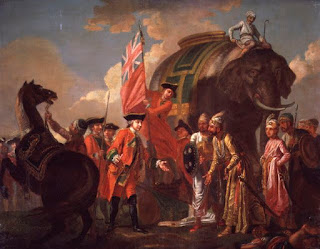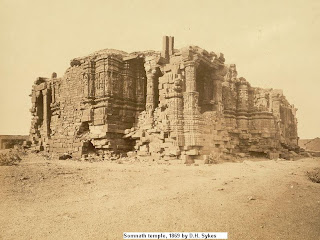
There is a divergence of views on how the word Bangla or Bengal came into being. The area that constitutes the present day West Bengal was ruled by various kingdoms in ancient times.
West Bengal was part of the Mauryan Empire (BC 321-185), the first and one of the greatest empires to be established in Indian history. The earliest reference to Bengal in foreign accounts has been found in those of the Greeks dating back to the first century BC. According to Mahavamsa, the Sri Lankan Buddhist Chronicle, Vijaya Singha, an obscure Vanga prince, conquered Sri Lanka in 544 BC.
After the fall of the Mauryan Empire, the territory of West Bengal came under the control of smaller kingdoms. After an interregnum it once again became part of the great Gupta rule, known as the classical age in Indian history.
After the fall of the Gupta empire, several local rulers asserted their independence. Chief among them were Dharmaditya, Gopachandra, and Samacharadeva. The first independent king of substance in Bengal was Shashanka who ruled in the seventh century AD. He proved to be a formidable opponent to the powerful Harsha.
After the death of Shashanka, Bengal plunged into anarchy (Matsya nyaya). The anarchy came to an end with the establishment of the Pala dynasty under Gopal. After a rule of about four hundred years, the Pala power was replaced by the Senas. Lakshman Sen, the last ruler of the Sena dynasty was defeated by Bakhtiar Khilji, a Turkish general of the Slave dynasty of Delhi Sultanate.
Bengal came under the control of the Mughal Empire. However, Mughal authority was nominally respected by the Nawabs of Murshidabad, who remained independent for all practical purposes .
Bengal came under the rule of the British after the defeat of Siraj ud-Daulah, the last independent Nawab, in the Battle of Plassey in 1757. Calcutta ceased to be the capital of India in 1911, Delhi taking the place. During India’s struggle for Independence, Bengal was the nerve centre of revolutionary and political activities. Subhash Chandra Bose is one of the so many prominent freedom fighters Bengal is reputed to have produced. When India achieved independence in 1947, Bengal was partitioned along religious lines.
The Indian state of West Bengal was created in 1947 when the Partition of India following India’s attainment of Independence split the province of Bengal India and East Pakistan. The mostly Muslim eastern part of the province became East Bengal (later renamed East Pakistan); the mostly Hindu western part became West Bengal. The former French colony of Chandannagar was incorporated into West Bengal in 1955.







%20at%20Rajagriha,%20the%20visit%20of%20Bimbisara.jpg)
